Abstract
Knowledge about cause, pathogenesis, and manifestations of hereditary metabolic diseases puts them among the best known of all human diseases. On the other hand, outcomes of treatment are cause for uncertainty and concern. In 1985, Hayes et al. analyzed efficacy of treatment up to 1983 in 65 of these diseases selected randomly from the McKusick catalogs. Disease scores were calculated for seven parameters: longevity; reproductive capability; somatic and cognitive development; and handicaps affecting schooling, work, and cosmetic appearance. Scores of the untreated and treated phenotypes were then compared. We have now measured progress over the past decade by calculating scores on the same 65 diseases from data in several hundred new reports published since 1983. All seven parameters in the 1993 survey reflect improved efficacy of treatment in the 10-year interval. However, the percent of diseases for which all manifestations of the disease were removed by treatment has not changed (12% in 1983; 12% in 1993). The group in which manifestations were untouched by treatment has become smaller (48% in 1983; 31% in 1993), and the group partially ameliorated by treatment had increased reciprocally (40% in 1983; 57% in 1993). Progress in the treatment of hereditary metabolic disease is thus better than it was, but it is still only a partial success. The advances are attributable to greater success with organ and tissue transplantation, better pharmacotherapy, and better support systems. Restoration of normal homeostasis, the key to successful treatment, remains an elusive challenge and is a logical, major focus for research in human genetics.
Full text
PDF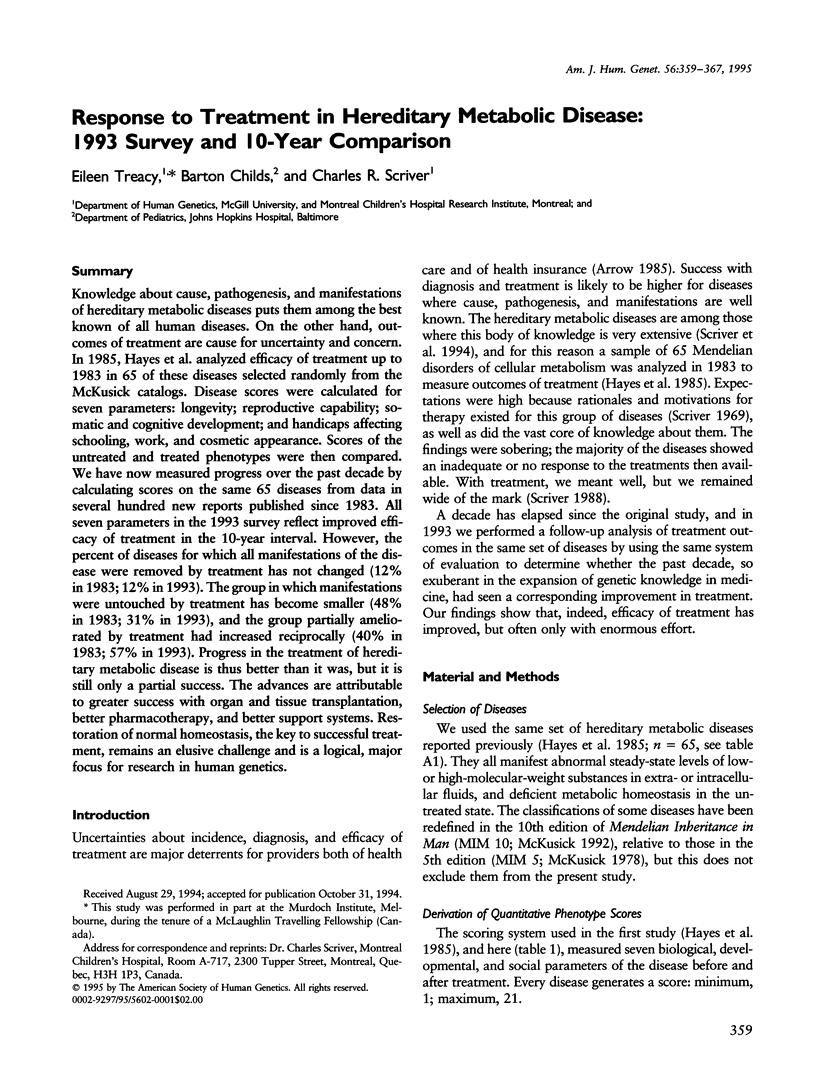
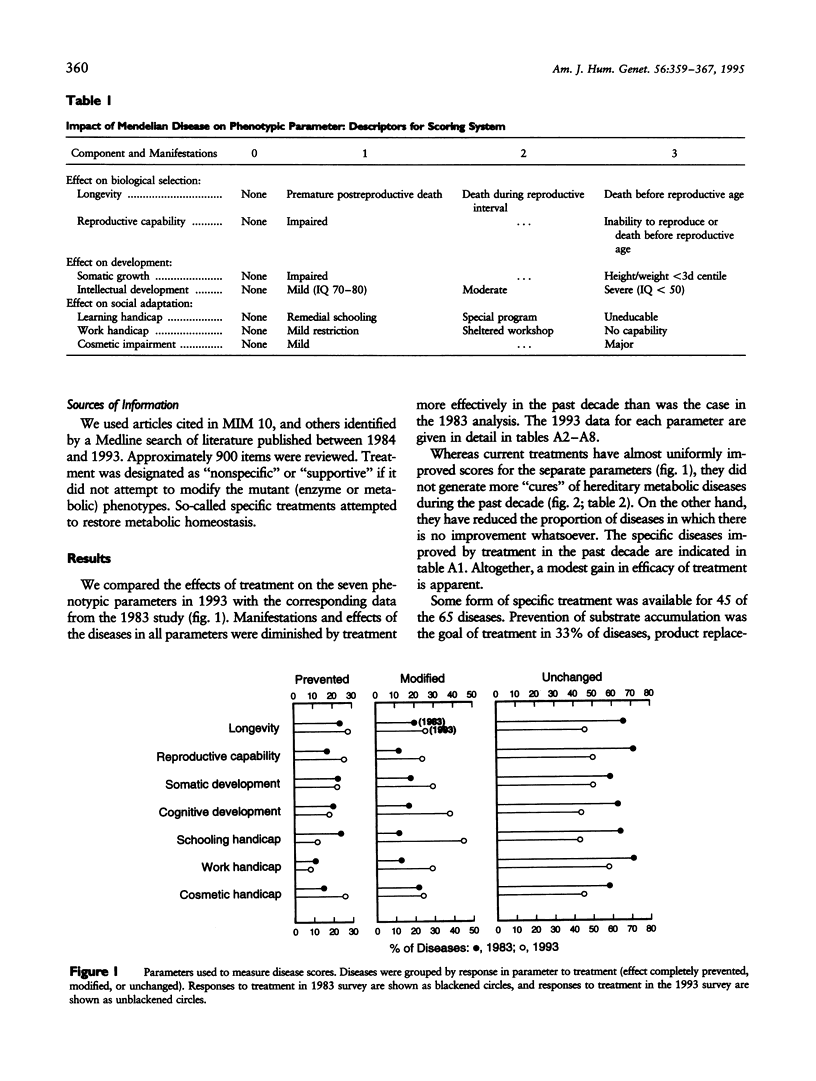
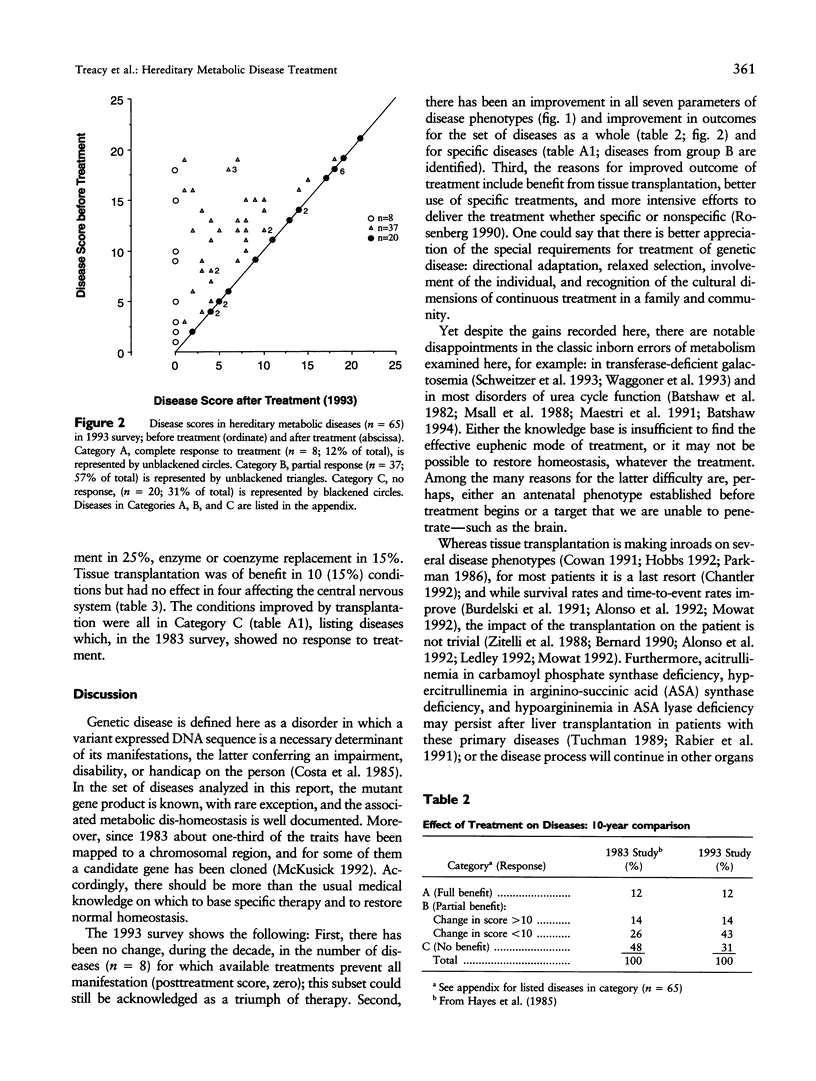
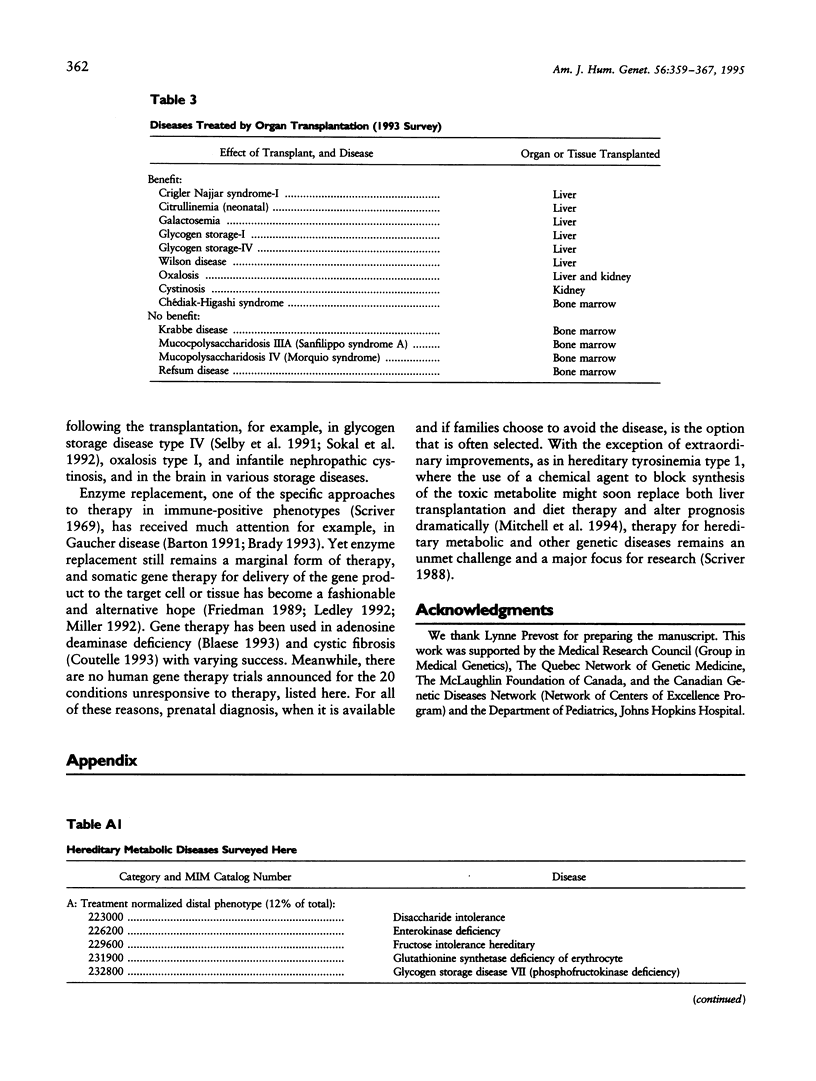
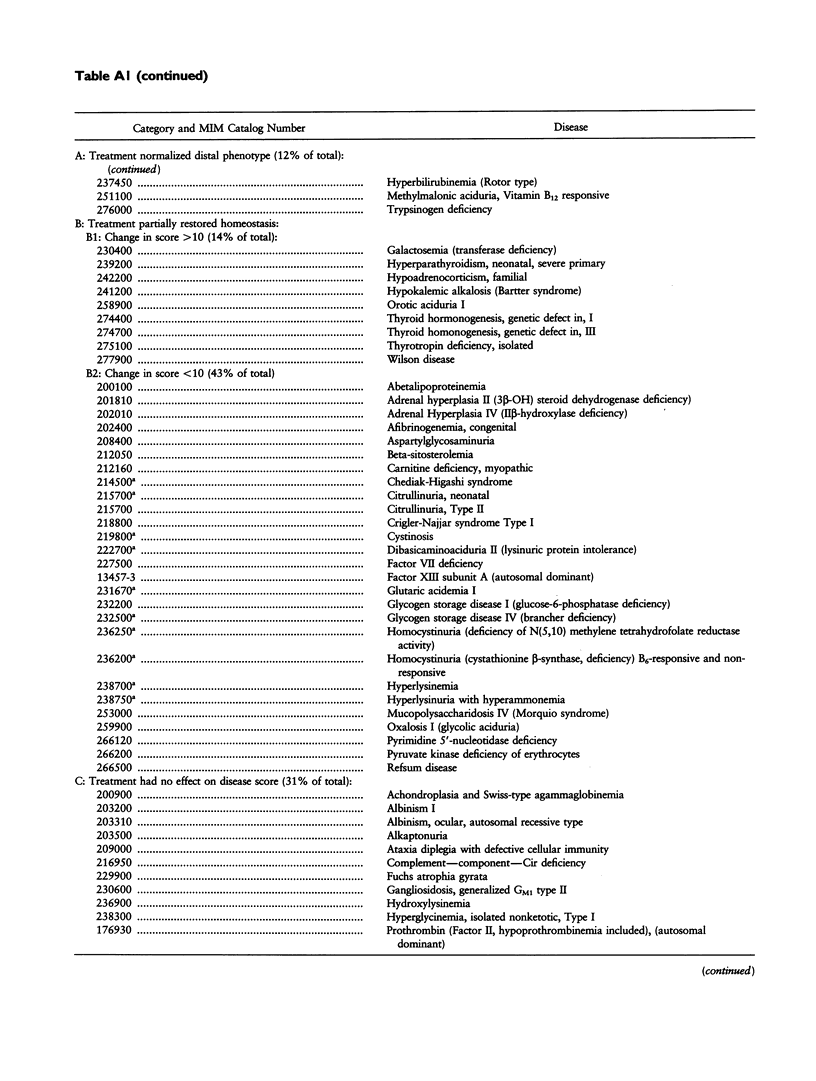
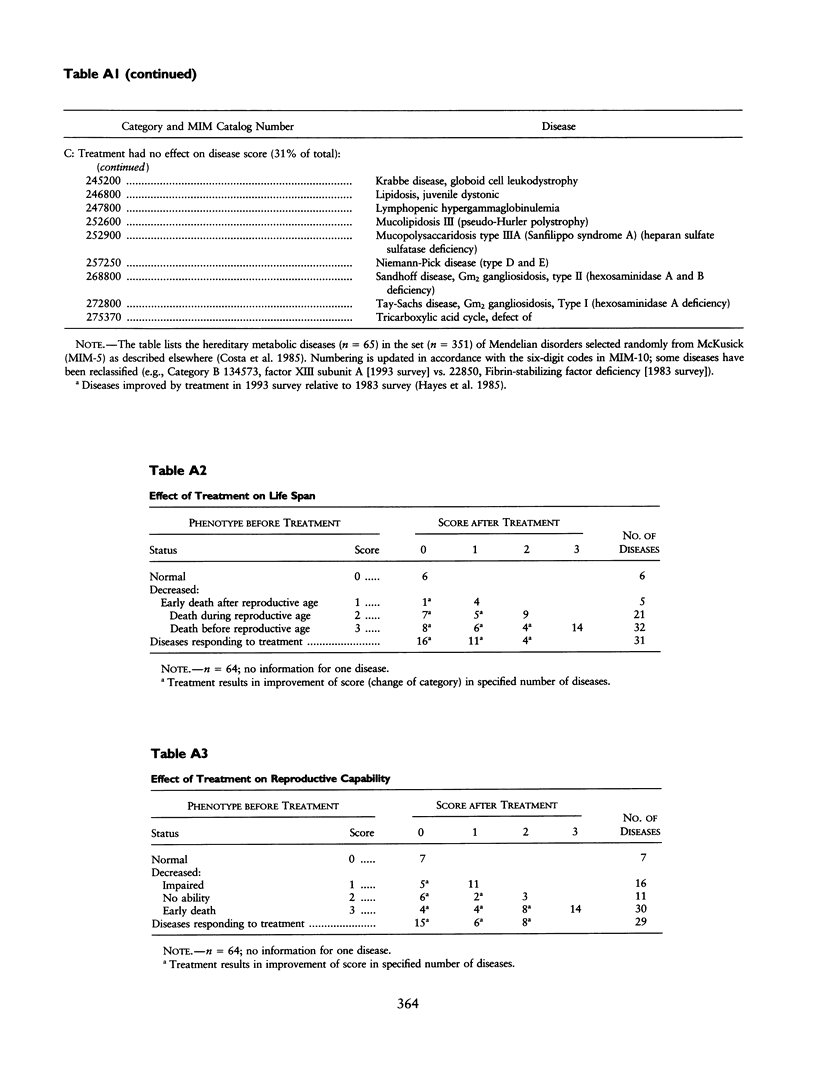
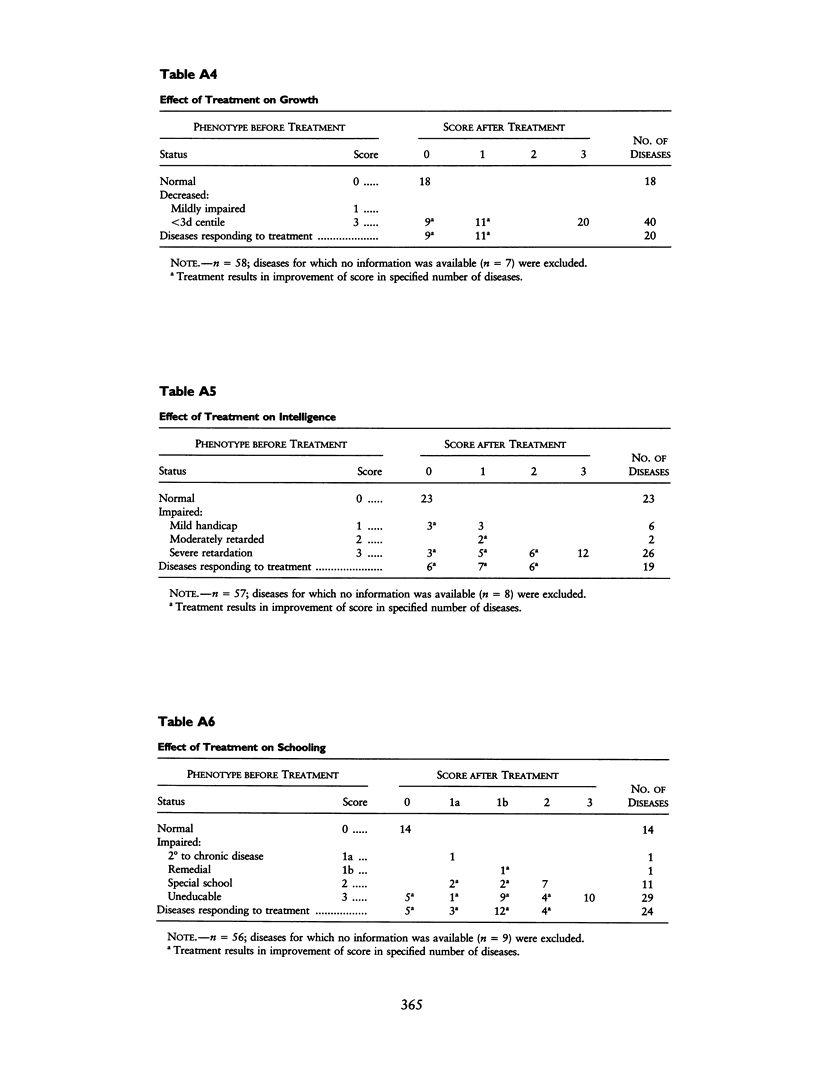
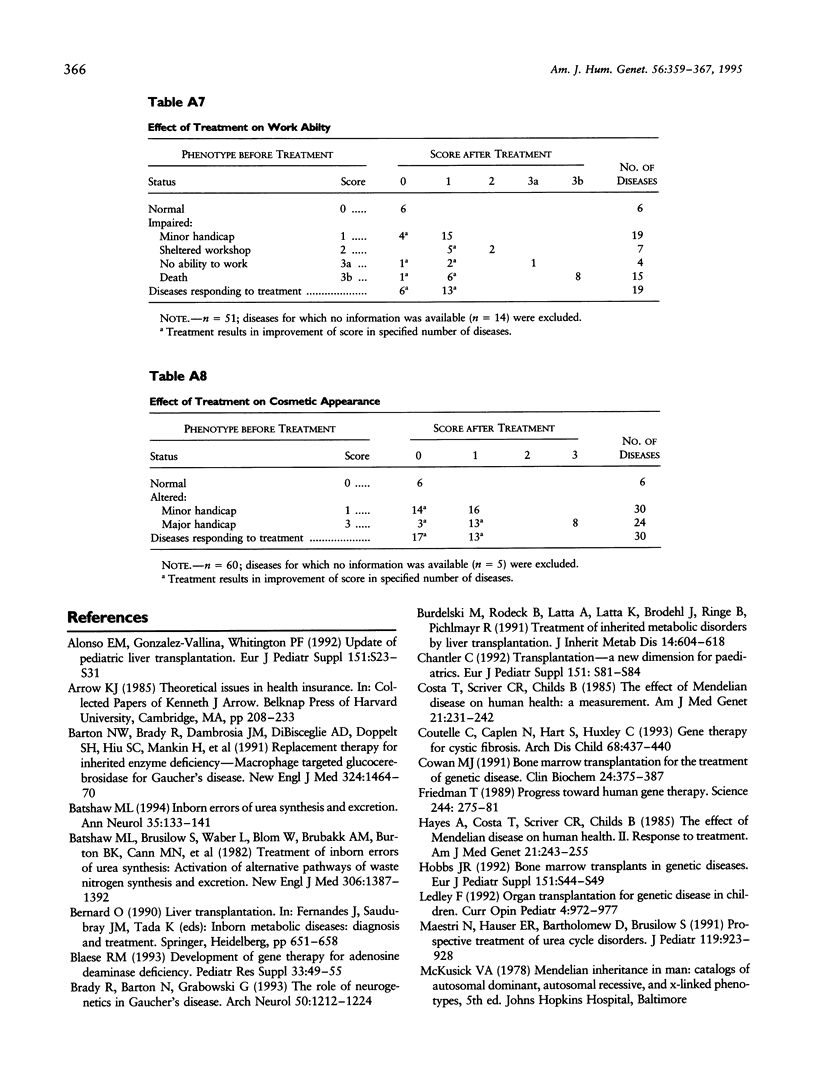
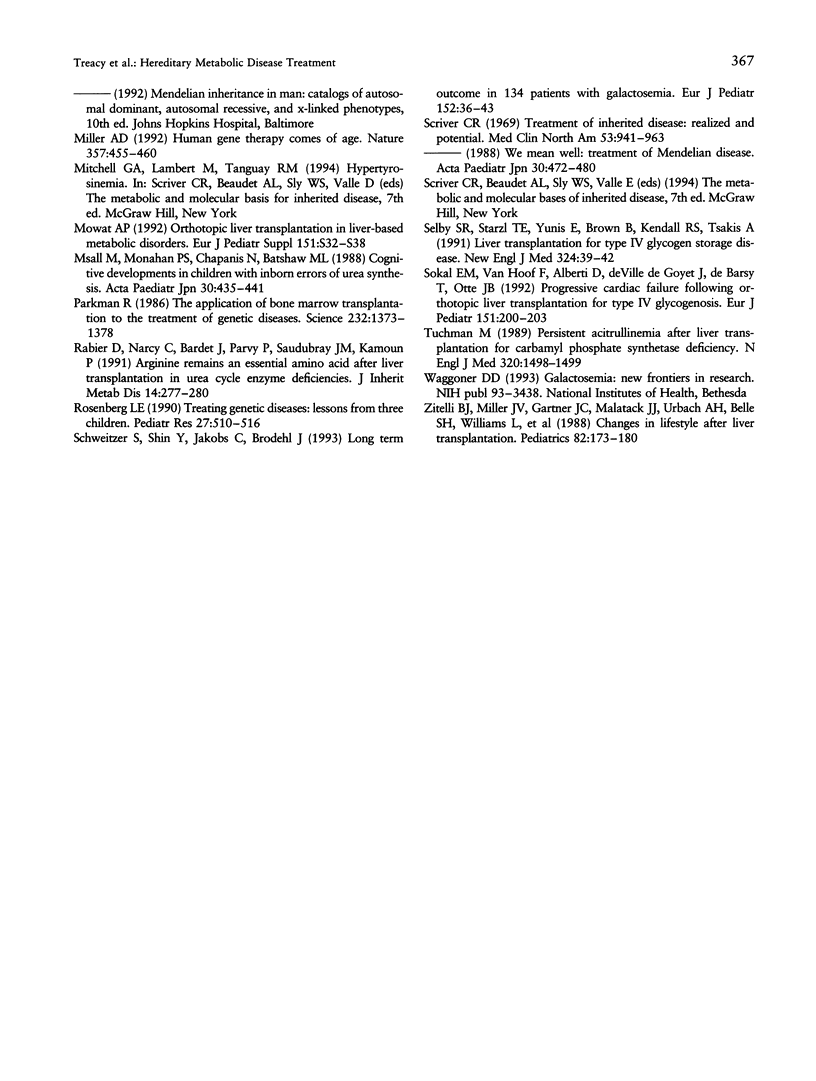
Selected References
These references are in PubMed. This may not be the complete list of references from this article.
- Alonso E. M., Gonzalez-Vallina R., Whitington P. F. Update of pediatric liver transplantation. Eur J Pediatr. 1992;151 (Suppl 1):S23–S31. doi: 10.1007/BF02125799. [DOI] [PubMed] [Google Scholar]
- Barton N. W., Brady R. O., Dambrosia J. M., Di Bisceglie A. M., Doppelt S. H., Hill S. C., Mankin H. J., Murray G. J., Parker R. I., Argoff C. E. Replacement therapy for inherited enzyme deficiency--macrophage-targeted glucocerebrosidase for Gaucher's disease. N Engl J Med. 1991 May 23;324(21):1464–1470. doi: 10.1056/NEJM199105233242104. [DOI] [PubMed] [Google Scholar]
- Batshaw M. L., Brusilow S., Waber L., Blom W., Brubakk A. M., Burton B. K., Cann H. M., Kerr D., Mamunes P., Matalon R. Treatment of inborn errors of urea synthesis: activation of alternative pathways of waste nitrogen synthesis and excretion. N Engl J Med. 1982 Jun 10;306(23):1387–1392. doi: 10.1056/NEJM198206103062303. [DOI] [PubMed] [Google Scholar]
- Batshaw M. L. Inborn errors of urea synthesis. Ann Neurol. 1994 Feb;35(2):133–141. doi: 10.1002/ana.410350204. [DOI] [PubMed] [Google Scholar]
- Bereano P. L. Biotechnology regulation. Science. 1989 Apr 21;244(4902):275–276. [PubMed] [Google Scholar]
- Brady R. O., Barton N. W., Grabowski G. A. The role of neurogenetics in Gaucher disease. Arch Neurol. 1993 Nov;50(11):1212–1224. doi: 10.1001/archneur.1993.00540110088009. [DOI] [PubMed] [Google Scholar]
- Burdelski M., Rodeck B., Latta A., Latta K., Brodehl J., Ringe B., Pichlmayr R. Treatment of inherited metabolic disorders by liver transplantation. J Inherit Metab Dis. 1991;14(4):604–618. doi: 10.1007/BF01797930. [DOI] [PubMed] [Google Scholar]
- Chantler C. Transplantation--a new dimension for paediatrics. Eur J Pediatr. 1992;151 (Suppl 1):S81–S84. doi: 10.1007/BF02125809. [DOI] [PubMed] [Google Scholar]
- Costa T., Scriver C. R., Childs B. The effect of Mendelian disease on human health: a measurement. Am J Med Genet. 1985 Jun;21(2):231–242. doi: 10.1002/ajmg.1320210205. [DOI] [PubMed] [Google Scholar]
- Coutelle C., Caplen N., Hart S., Huxley C., Williamson R. Gene therapy for cystic fibrosis. Arch Dis Child. 1993 Apr;68(4):437–440. doi: 10.1136/adc.68.4.437. [DOI] [PMC free article] [PubMed] [Google Scholar]
- Cowan M. J. Bone marrow transplantation for the treatment of genetic diseases. Clin Biochem. 1991 Aug;24(4):375–381. doi: 10.1016/0009-9120(91)80012-r. [DOI] [PubMed] [Google Scholar]
- Hayes A., Costa T., Scriver C. R., Childs B. The effect of Mendelian disease on human health. II: Response to treatment. Am J Med Genet. 1985 Jun;21(2):243–255. doi: 10.1002/ajmg.1320210206. [DOI] [PubMed] [Google Scholar]
- Hobbs J. R. Bone marrow transplants in genetic diseases. Eur J Pediatr. 1992;151 (Suppl 1):S44–S49. doi: 10.1007/BF02125802. [DOI] [PubMed] [Google Scholar]
- Maestri N. E., Hauser E. R., Bartholomew D., Brusilow S. W. Prospective treatment of urea cycle disorders. J Pediatr. 1991 Dec;119(6):923–928. doi: 10.1016/s0022-3476(05)83044-6. [DOI] [PubMed] [Google Scholar]
- Miller A. D. Human gene therapy comes of age. Nature. 1992 Jun 11;357(6378):455–460. doi: 10.1038/357455a0. [DOI] [PubMed] [Google Scholar]
- Mowat A. P. Orthotopic liver transplantation in liver-based metabolic disorders. Eur J Pediatr. 1992;151 (Suppl 1):S32–S38. doi: 10.1007/BF02125800. [DOI] [PubMed] [Google Scholar]
- Msall M., Monahan P. S., Chapanis N., Batshaw M. L. Cognitive development in children with inborn errors of urea synthesis. Acta Paediatr Jpn. 1988 Aug;30(4):435–441. doi: 10.1111/j.1442-200x.1988.tb02534.x. [DOI] [PubMed] [Google Scholar]
- Parkman R. The application of bone marrow transplantation to the treatment of genetic diseases. Science. 1986 Jun 13;232(4756):1373–1378. doi: 10.1126/science.3520819. [DOI] [PubMed] [Google Scholar]
- Rabier D., Narcy C., Bardet J., Parvy P., Saudubray J. M., Kamoun P. Arginine remains an essential amino acid after liver transplantation in urea cycle enzyme deficiencies. J Inherit Metab Dis. 1991;14(3):277–280. doi: 10.1007/BF01811681. [DOI] [PubMed] [Google Scholar]
- Schweitzer S., Shin Y., Jakobs C., Brodehl J. Long-term outcome in 134 patients with galactosaemia. Eur J Pediatr. 1993 Jan;152(1):36–43. doi: 10.1007/BF02072514. [DOI] [PubMed] [Google Scholar]
- Scriver C. R. Treatment of inherited disease: realized and potential. Med Clin North Am. 1969 Jul;53(4):941–963. [PubMed] [Google Scholar]
- Selby R., Starzl T. E., Yunis E., Brown B. I., Kendall R. S., Tzakis A. Liver transplantation for type IV glycogen storage disease. N Engl J Med. 1991 Jan 3;324(1):39–42. doi: 10.1056/NEJM199101033240107. [DOI] [PMC free article] [PubMed] [Google Scholar]
- Sokal E. M., Van Hoof F., Alberti D., de Ville de Goyet J., de Barsy T., Otte J. B. Progressive cardiac failure following orthotopic liver transplantation for type IV glycogenosis. Eur J Pediatr. 1992 Mar;151(3):200–203. doi: 10.1007/BF01954384. [DOI] [PubMed] [Google Scholar]
- Tuchman M. Persistent acitrullinemia after liver transplantation for carbamylphosphate synthetase deficiency. N Engl J Med. 1989 Jun 1;320(22):1498–1499. doi: 10.1056/NEJM198906013202219. [DOI] [PubMed] [Google Scholar]
- Zitelli B. J., Miller J. W., Gartner J. C., Jr, Malatack J. J., Urbach A. H., Belle S. H., Williams L., Kirkpatrick B., Starzl T. E. Changes in life-style after liver transplantation. Pediatrics. 1988 Aug;82(2):173–180. [PMC free article] [PubMed] [Google Scholar]


